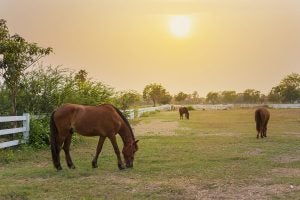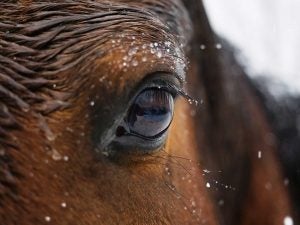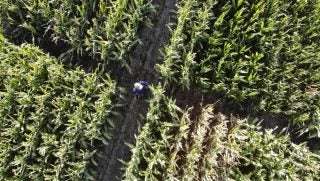Rein in the gossip and saddle up with the facts! Just like with many other things in the agriculture world, there are lots of interesting things to know about horses.
Especially for people who haven’t gotten up close with these animals — or aren’t able to interact with them regularly — there’s surely something below that’ll help draw you in.
1. What snow on a horse means
If you see snow on a horse, it actually means the horse is retaining its heat. If your horse has access to outside and it does not have snow and/or ice when it’s snowing outside, that is when you know it is cold. When the snow is melted it means the horses’ body heat is radiating out to melt it, therefore not being kept in to regulate its body temp.
2. The layered hoof
The hoof actually has many layers, composed of bone and tissue. Just like our fingernails, the wall of the hoof is made up of keratin and must be worn down, or trimmed. The frog is also one part of the hoof — it has nerves and allows the horse to know where their foot is.
3. The variety of a horse’s diet
Horses enjoy food beyond grain and forage — treats such as apples, carrots, berries, and turnips are popular. Apples provide potassium, fiber and vitamin A. Carrots can provide immune support, relieve constipation and act as an anti-inflammatory.

4. Growing a winter coat
The length of horses’ hair is determined by the amount of light they receive — usually we think of this as daylight. But that’s largely why horses kept in a stall all year round don’t grow what is known as a full winter coat, because their brain constantly has the light, even if from artificial sources.
5. Caring for a horse mane
A horse has a “tough scalp” but their mane and tail do still have nerves. The nerves are located in their hair follicles. Some may be more sensitive than others, this is why keeping their hair untangled is very important.
6. Communicating with their mouths
Horses may put their mouths on people for multiple reasons. One is if they are just wanting to be social and show their love to their person. Two is if they are anxious and trying to put off what is about to happen, like putting on a halter if they have previous trauma from it or even getting a vaccination from the vet.

7. Horses aren’t as cold as you may think
Horses have a thick layer of skin and a coat of hair. They can be more conditioned to cold weather and putting a blanket on them may make them too hot. Just because you are a little chilly doesn’t mean the horse is. Between skin and coat, horses can have up to 7 mm thickness, while human skin is up to 4 mm thick.
There are many other facts (and myths) out there about horses and the agriculture industry. Want a further peek into the equestrian world? Follow these people on social media: Karina Harris, Jessie, and Jake Zielke (The Lost Cowboy). Keep following my social platforms and reading my articles to learn so much more!
Michelle Miller, the “Farm Babe,” is an internationally recognized keynote speaker, writer, and social media influencer and travels full time to advocate for agriculture. She comes from an Iowa-based row crop and livestock farming background and now resides on a timber farm in North Central Florida.



